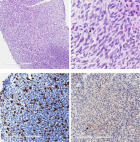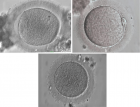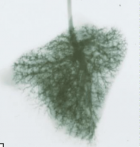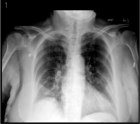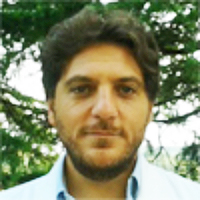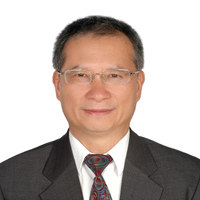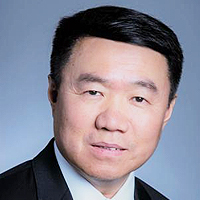Current Issue (Volume - 8 | Issue - 1)
Update on Mesenchymal Stem Cells
Published on: 27th February, 2024
Mesenchymal Stromal/Stem Cells (MSCs); which can be isolated from Bone Marrow (BM) in addition to several tissues and body fluids; have the following characteristic features: self-renewal, differentiation into various cell types, plastic adherence, and specific surface markers on flow cytometry [1-3].
Forensic Aspects and Dilemmas in Gynecological Laparoscopy
Published on: 29th April, 2024
Gynecological laparoscopy has to be analyzed also in the context of complications that occur during the surgical procedures. Complications occur daily. For this reason, emphasis should be placed on lifelong continuous education and training. Given the risks and complications we face, we must be trained to deal with them. This improves the safety of laparoscopic operations. Without such certainty, gynecological laparoscopy would not be the method of choice in a minimally invasive approach. This requires significant commitment, effort, and responsibility. In this way, we provide our patients with the best and highest quality healthcare service. Likewise, with such an approach, the frequency of complications is reduced to a minimum. New perspectives and possibilities are associated with the application of robotic surgery.
The Healing and Aging-related Properties of Adipose Tissue Fragments Obtained through the Guided SEFFI Procedure’s Mechanical Fragmentation are Facilitated by the Exosomes Present in the Final Injection
Published on: 1st May, 2024
The Injection of autologous Adipose-Derived Stem Cells (ADSCs) and Stromal Vascular Fraction (SVF) into dermal and subdermal layers can improve skin volume and rejuvenation. The SEFFI (Superficial Enhanced Fluid Fat Injection) technique, which involves minimal manipulation of autologous microfragmented adipose tissue, was utilized for harvesting and re-injection, using the SEFFILLER™ disposable medical device. Mechanical fragmentation of adipose tissue is a well-established surgical technique that stimulates tissue regeneration, filler, and biological activity. The study evaluated the biological properties (regenerative and anti-aging) of different harvest and processing fat graft methods among which the fragmented adipose tissue, specifically focusing on the presence of exosomes. Exosomes, nanometer-sized vesicles produced by cells for cellular communication, were found to contain miRNAs with anti-inflammatory, regenerative, and vascular content. The products’ contained exosomes were confirmed in the study through electron microscopy, Western Blotting, gene expression, and sequencing of miRNA content.
The Outcome of Outpatient Intermediate and High Dose Cytarabine Consolidation Chemotherapy in Patients with Acute Myeloid Leukemia. The Experience of King Fahad Specialist Hospital in Dammam, Saudi Arabia
Published on: 9th May, 2024
Background: Adult patients with Acute Myeloid Leukemia (AML) have traditionally been hospitalized for the duration of intensive consolidation chemotherapy until blood count recovery to avoid complications. Recently, there has been a trend to shift the care of AML patients treated with intensive chemotherapy from inpatient to outpatient settings to reduce treatment costs and save beds. Methods and materials: A retrospective study of AML patients who received cytarabine consolidation chemotherapy between the 1st of August 2016 and the 31st of December 2023 at King Fahad Specialist Hospital in Dammam, Saudi Arabia was performed. Results: Over a period of 7 years and 4 months, 62 patients received a total of 127 cycles of intensive consolidation chemotherapy at outpatient setting. At diagnosis: 12 patients had extramedullary disease, and 17 patients had adverse cytogenetic abnormalities. Following the 127 cycles of chemotherapy, 38 episodes of febrile neutropenia were encountered, and 46 hospital admissions were required. No complications were encountered following 62.2% of the cycles of consolidation therapy and no early mortality due to intensive consolidation therapy was reported. Out of 62 patients studied, 36 patients underwent various forms of hematopoietic stem cell transplantation. Disease relapses were encountered in 24 patients and the 5-year incidence of relapse for the entire group of patients was 42%. The 5-year leukemia-free survival for the: entire study patients, transplanted patients, and non-transplanted patients were: 43%, 38%, and 50% respectively. The 5-year overall survival for the: entire study patients, transplanted patients, and non-transplanted patients were: 44%, 34%, and 65% respectively. At the end of follow-up: 37 patients (59.68%) were alive, 24 patients (38.71%) were dead, and the fate of 1 patient (1.61%) was unknown as the patient moved to another hospital. Conclusion: Administration of intensive consolidation chemotherapy for patients with AML at outpatient setting is safe, feasible, and cost-effective. The incidence of infectious complications was relatively low. No early treatment-related mortality due to intensive consolidation therapy was encountered. Outpatient administration of intensive consolidation therapy can save beds, reduce hospital costs, and is associated with short-term and long-term outcomes that are comparable to inpatient administration of consolidation therapy.
Therapeutic Implications of Stem Cell Secretome
Published on: 17th June, 2024
The stem cell secretome is a collective mixture of soluble and insoluble factors released by stem cells during paracrine communication and/or autocrine signaling. In addition to intracellular communication, these paracrine factors play an integral role in tissue development and generation, acting as the primary driving force in the regenerative properties of stem cells. Despite such great potential of stem cell secretome in therapeutic applications, the lack of secretome-based treatments available for the public at the time of writing is odd and puzzling. Hence, this review aims to provide insights into recent advancements in understanding the stem cell secretome, as well as discuss future possibilities and current limitations that must be overcome for the proper development of secretome-based therapies. Through utilizing the MEDLINE database from the National Library of Medicine® (NLM), we found that while there is much evidence of the therapeutic effects of secretome-based therapy, flaws involving regulations and standardization hinder it from revolutionizing regenerative medicine at present. It is cardinal to emphasize that while secretome-based therapy may be the solution for many untreatable conditions, much research is still required before it is approved for clinical practice.
Fifteen year Follow-up of Relapsed/ Refractory Patients with Hodgkin Lymphoma Treated with Autologous Hematopoietic Stem Cell Transplantation
Published on: 2nd July, 2024
We reviewed our outcomes of patients with relapsed/refractory Hodgkin Lymphoma treated with autologous stem cell transplant over a 30-year period, 1992 to 2022 and are reporting 15-year Disease-Free Survival (DFS) and Overall Survival (OS) of the 36 patients treated (19 men, 17 women, median age 41). Over the years there were different preparative regimens employed (carmustine, etoposide, melphalan and BCNU, etoposide, cytarabine, and melphalan) as well as post-transplant consolidation therapy (brentuximab). With a median follow-up of 15 years, the DFS is 52% and OS is 64%. Long-term complications include cardiomyopathy and second malignancies.The use of better salvage regimens and post-transplant consolidation therapy should lead to better outcomes.
Pure Red Cell Aplasia - Post Major ABO Incompatible Allogenic Stem Cell Transplantation Role of Ibrutinib
Published on: 24th July, 2024
Pure Red Cell Aplasia (PRCA) is a well-recognized complication of Major ABO-incompatible allogeneic stem cell transplantation. It is featured by anemia, Reticulocytopenia, and the absence of erythroblasts in a normal-appearing bone marrow biopsy. The mechanism for PRCA is presumed to be the persistence of recipient isoagglutinins, produced by residual host B lymphocytes or plasma cells, which probably interfere with the engraftment of donor erythroid cells. Several risk factors for PRCA have been reported, such as the presence of Anti-A Isoagglutininsbefore transplantation, reduced intensity conditioning, absence of Graft Versus Host Disease (GVHD), sibling donor and Cyclosporin A(CsA) as GVHD prophylaxis. PRCA is not a barrier to going ahead with Hematopoietic Stem Cell Transplantation (HSCT). There are many therapeutic options however few recover spontaneously, among the available options include high-dose steroids, Erythropoietin(EPO), Plasma exchange, Donor lymphocyte Infusion (DLI), treatment with Rituximab, Bortezomib, Daratumumab and tapering or discontinuation of immunosuppression. All these options have variable success in the literature ranging from 30% - 70%, Non-responders become red cell transfusion dependent and their quality of life is impaired. We are reporting a novel therapeutic option, Ibrutinib as an armamentarium in treating the PRCA post-HSCT, which works by blocking the Bruton Tyrosine Kinase (BTK) pathway thereby inhibiting the host B cell isoagglutinins production and good clinical response.
Elderly (> 70 years) Multiple Myeloma Patients Benefit Equally from Autologous Hematopoietic Stem Cell Transplantation When Compared to Younger Patients
Published on: 8th August, 2024
Autologous Hematopoietic Stem Cell Transplantation (AHSCT) performed after induction therapy is the standard of care for newly diagnosed Multiple Myeloma (MM) patients who qualify. Our institution has performed AHSCT for MM since 1991, and in this study, we sought to retrospectively examine the outcomes of 303 MM patients who underwent AHSCT from 1991-2021. We focused on Overall Survival (OS) and Progression-Free Survival (PFS) in patients in addition to Landmark survival (1-year post-transplantation). We found that in elderly patients > 70 years of age there was no significant difference in OS at 12 years, with 51% for patients < 70 years of age and 50% > 70; these were the same numbers for PFS at 12 years as well. We also found that median overall survival is improving overall with each decade in our transplanted MM patients with patient survival improved to over > 80% regardless of age at 7 years, when the previous median overall survival was 6 - 6.6 years before 2001. Given our findings, supported by others, we show that survival is continually improving over time in MM AHSCT patients and that AHSCT can be performed safely with equivalent landmark and long-term PFS and OS in patients of advanced age.
Clinical Case of Successful Therapy for the Patient with Autism by use of Fetal Stem Cells
Published on: 19th August, 2024
More than 60 million persons all over the world are living with the diagnosis of “Autism”, in accordance with the UNO. According to the WHO, almost every hundredth child is a sufferer of ASD. Such figures emphasize globalization of the problem, and its impact not only on the child’s family but also on the economies of entire countries.Autism diagnosis is difficult and based on the general symptoms in kids. Today, the neuroimaging techniques (methods of functional Magnetic Resonance Imaging (MRI) and MRI tractography), Electroencephalography (EEG), evoked cognitive potentials and dynamic monitoring of the results help with an objective evaluation of stem cell therapy.Treatment options in modern pharmacology and rehabilitation psychotherapy for ASD kids are limited. Therapy methods do not ensure a full integration into social life and personality awareness. To alleviate likely problems in society, different therapeutic approaches exist that might reduce the manifestation of the various autism symptoms. FSC therapy is one such innovative method that has recently become enough popular.We inform about the clinical case of successful treatment using fetal stem cells for a child with autism followed by the period of 1-year follow-up showing significant clinical results. Over one year, the positive changes that had been proved by the ATEC questionnaire, the EEG results, and MRI-tractography were noted by the patient’s family. As emphasized in the clinical case report, fetal stem cell therapy is a promising and efficient treatment for children with autism. All that was sufficiently confirmed by the results acquired because we saw an overall improvement in this patient.
Exploring Environmental Neurotoxicity Assessment Using Human Stem Cell-Derived Models
Published on: 15th November, 2024
Neurotoxicity is increasingly recognized as a critical factor impacting long-term health, with growing evidence linking it to both neurodevelopmental and neurodegenerative diseases. Pesticides, widely used in agriculture and industry, have emerged as significant contributors to neurotoxic risk, given their capacity to disrupt key neurodevelopmental processes at low exposure levels. As conventional animal models present limitations in interspecies translation, human-derived neuron-based in vitro screening strategies are urgently needed to assess potential toxicants accurately. Human-induced pluripotent stem cells (hiPSCs) offer an innovative and scalable source for human-specific neuronal models that complement traditional animal-based approaches and support the development of predictive assays for neurotoxicity. Recent various stem cell models, including 2D cultures, 3D organoids, and microfluidic systems, are now available, advancing predictive neurotoxicology by simulating key aspects of human neural development and function. With the integration of High-Throughput (HT) and High-Content (HC) screening methodologies, these hiPSC-based systems enable efficient, large-scale evaluation of chemical effects on neural cells, enhancing our ability to detect early biomarkers of neurotoxic effects. Identifying early biomarkers of neurotoxic is essential to developing therapeutic interventions before irreversible damage occurs. This is particularly crucial in the context of developmental neurotoxicity, where early exposure to toxicants can have lifelong consequences. This review specifically presents an in-depth overview of the current progress in hiPSC-derived neural models and their applications in neurotoxicity testing, with a specific focus on their utility in assessing pesticide-induced neurotoxicity. Emphasizing future research priorities, we highlight the potential of these models to transform predictive toxicology, offering more human-relevant assessments and advancing the field toward a more precise evaluation of environmental neurotoxicants.

HSPI: We're glad you're here. Please click "create a new Query" if you are a new visitor to our website and need further information from us.
If you are already a member of our network and need to keep track of any developments regarding a question you have already submitted, click "take me to my Query."






